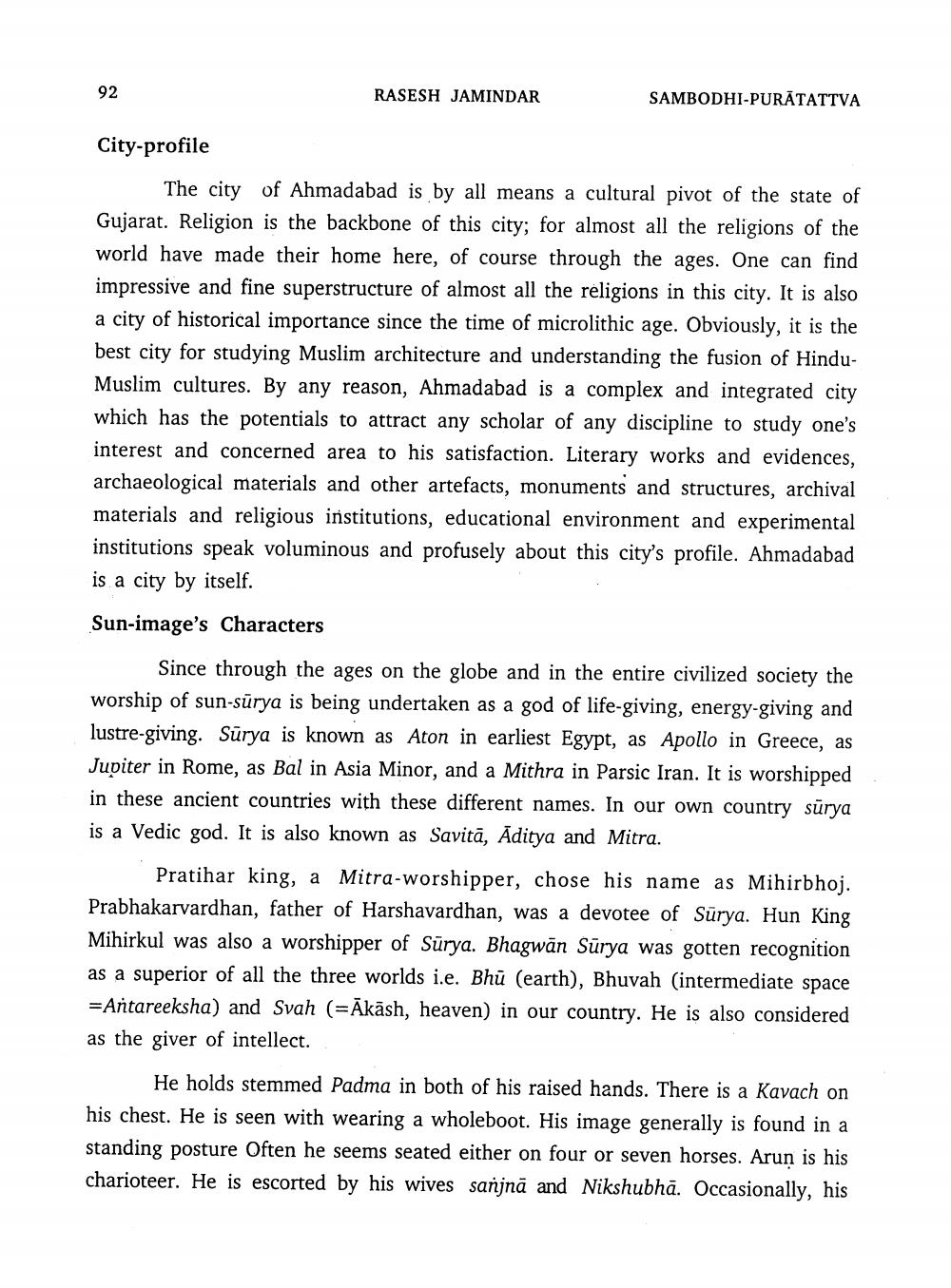________________
92
RASESH JAMINDAR
SAMBODHI-PURĀTATTVA
City-profile
The city of Ahmadabad is by all means a cultural pivot of the state of Gujarat. Religion is the backbone of this city; for almost all the religions of the world have made their home here, of course through the ages. One can find impressive and fine superstructure of almost all the religions in this city. It is also a city of historical importance since the time of microlithic age. Obviously, it is the best city for studying Muslim architecture and understanding the fusion of HinduMuslim cultures. By any reason, Ahmadabad is a complex and integrated city which has the potentials to attract any scholar of any discipline to study one's interest and concerned area to his satisfaction. Literary works and evidences, archaeological materials and other artefacts, monuments and structures, archival materials and religious institutions, educational environment and experimental institutions speak voluminous and profusely about this city's profile. Ahmadabad is a city by itself.
Sun-image's Characters
Since through the ages on the globe and in the entire civilized society the worship of sun-sūrya is being undertaken as a god of life-giving, energy-giving and lustre-giving. Sūrya is known as Aton in earliest Egypt, as Apollo in Greece, as Jupiter in Rome, as Bal in Asia Minor, and a Mithra in Parsic Iran. It is worshipped in these ancient countries with these different names. In our own country surya is a Vedic god. It is also known as Savita, Aditya and Mitra.
Pratihar king, a Mitra-worshipper, chose his name as Mihirbhoj. Prabhakarvardhan, father of Harshavardhan, was a devotee of Surya. Hun King Mihirkul was also a worshipper of Sürya. Bhagwan Sürya was gotten recognition as a superior of all the three worlds i.e. Bhū (earth), Bhuvah (intermediate space =Antareeksha) and Svah (=ākāsh, heaven) in our country. He is also considered as the giver of intellect.
He holds stemmed Padma in both of his raised hands. There is a Kavach on his chest. He is seen with wearing a wholeboot. His image generally is found in a standing posture Often he seems seated either on four or seven horses. Arun is his charioteer. He is escorted by his wives sanjna and Nikshubhā. Occasionally, his




